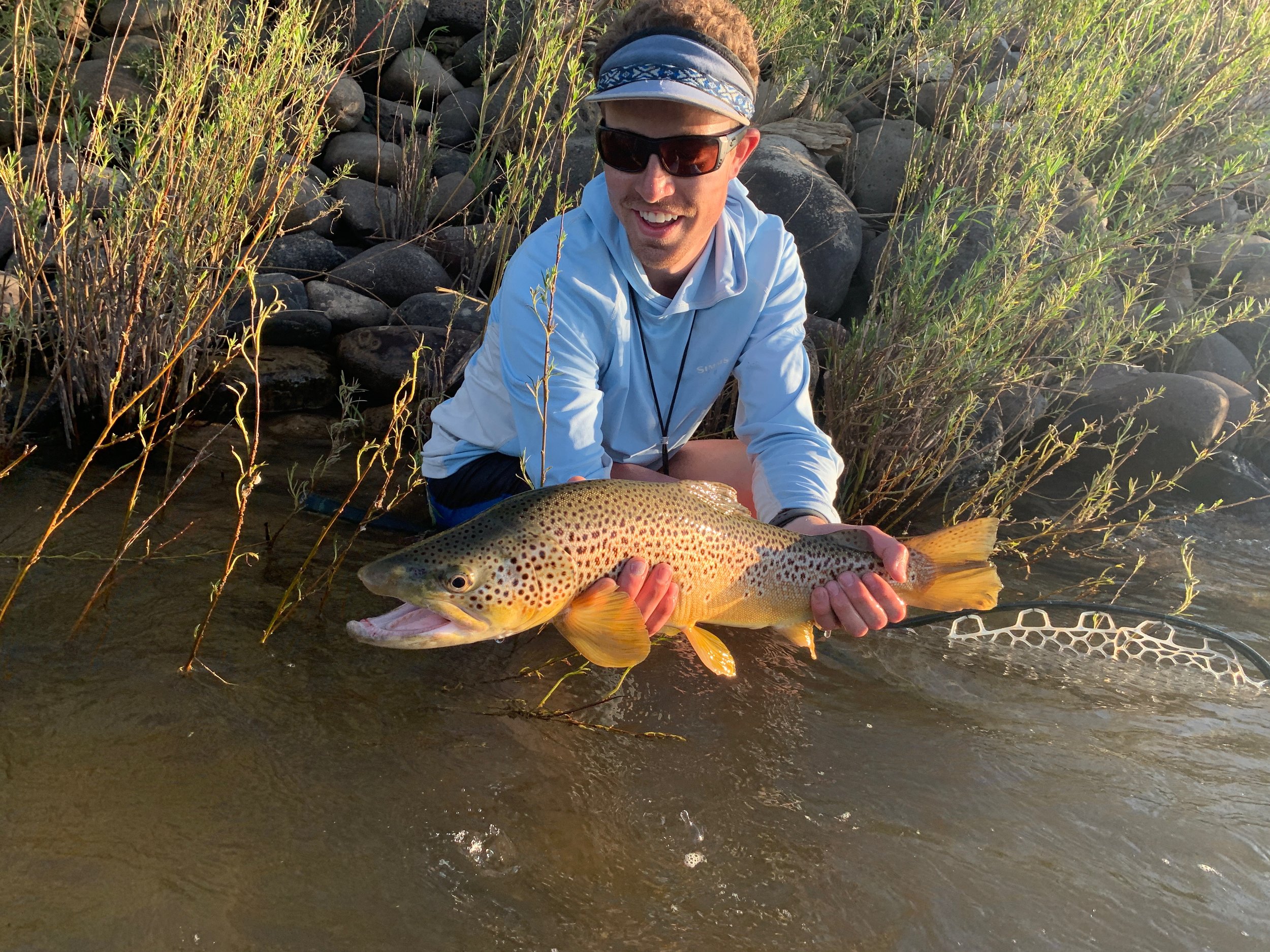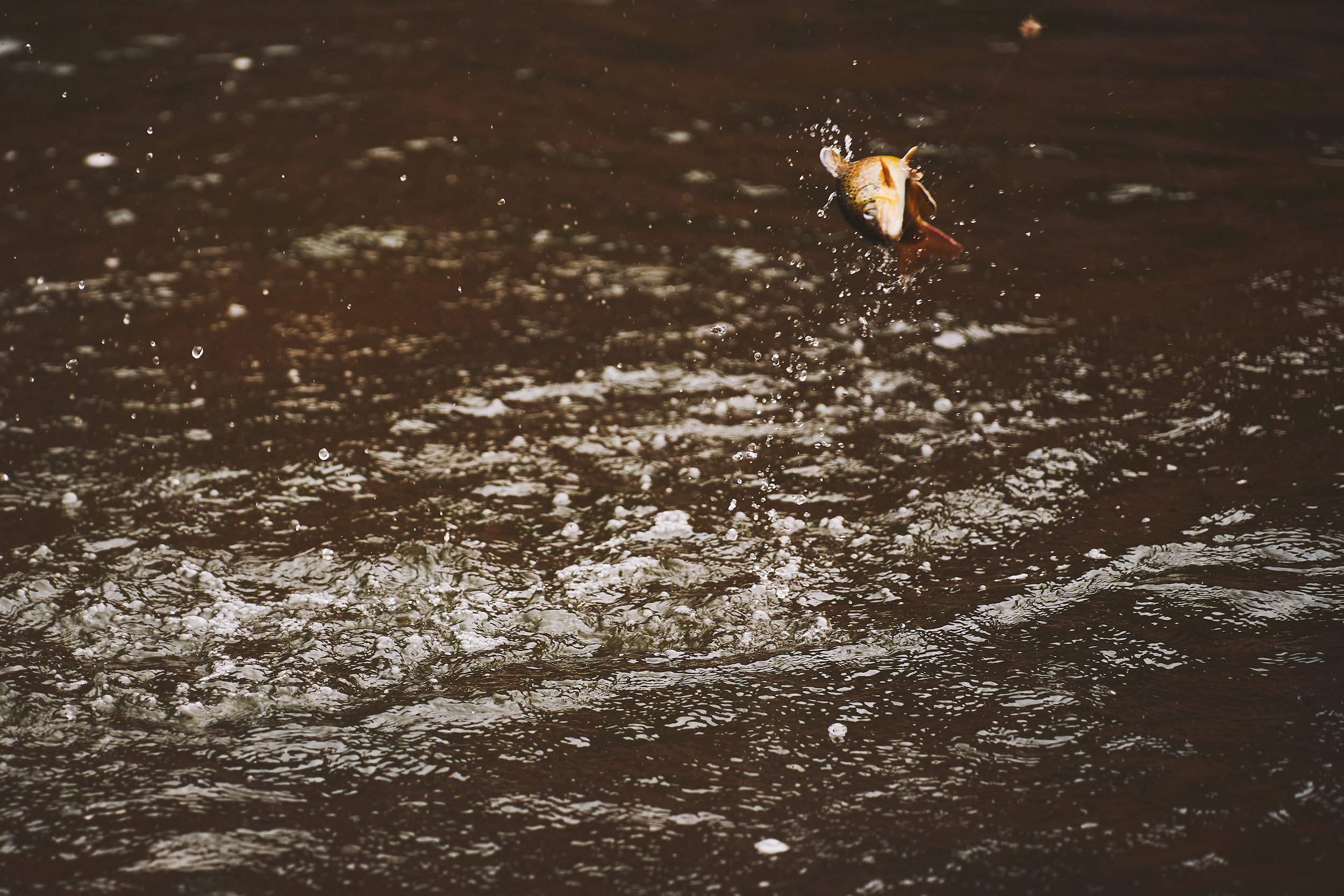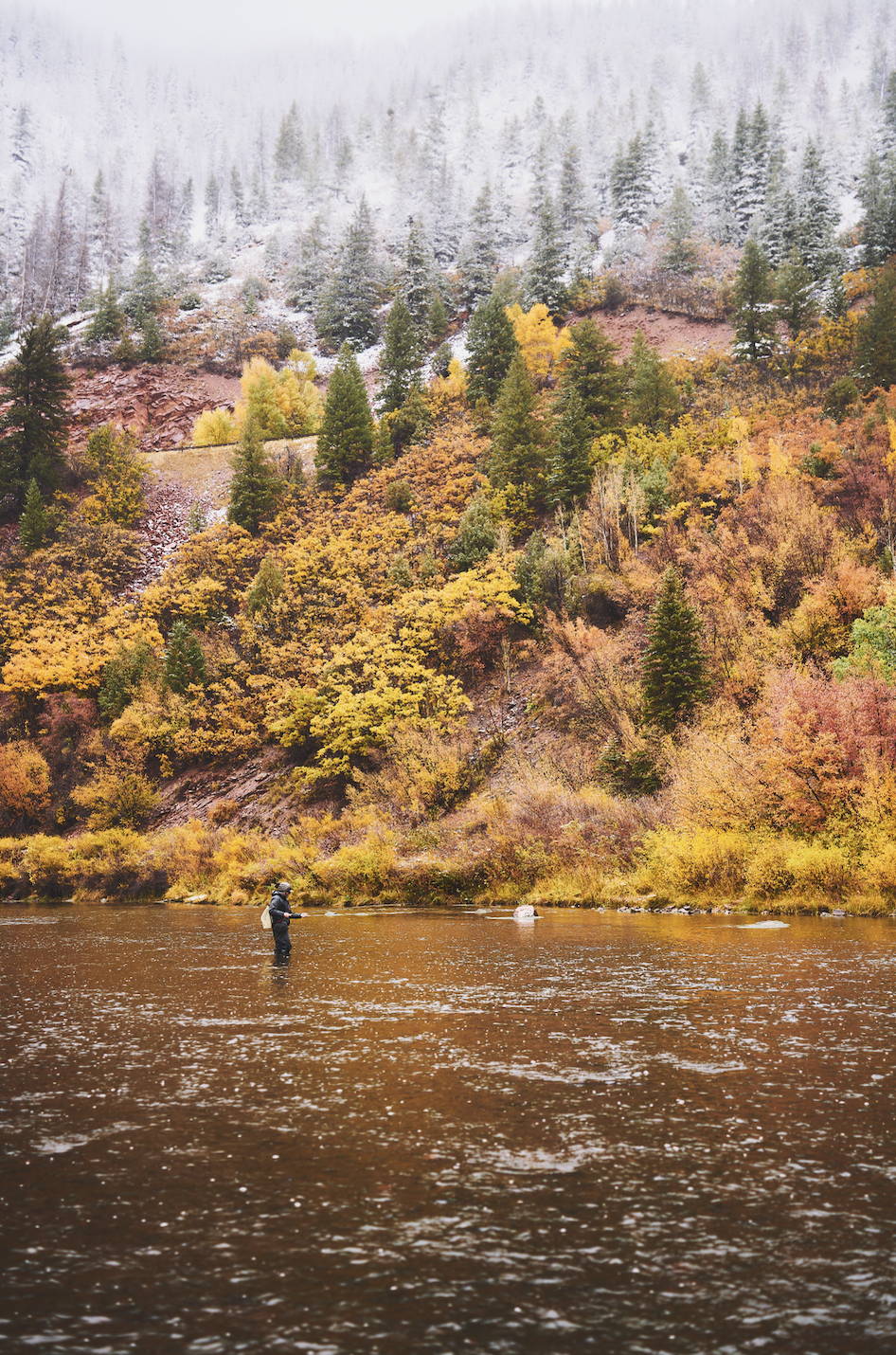
Beck Brooks
1. Gear
As a dry fly angler on the Western Slope, I rely on versatility to handle diverse river conditions.On the larger rivers like the Roaring Fork, Gunnison, and Colorado my go-to rod is a 9 foot 6wt with a large arbor reel. This setup tackles windy conditions, allowing me to cast big hoppers, stoneflies, and allows me to skate caddis dries across long, fast, shallow riffles. My favorite rod in my quiver for these large swift freestones in Guideline’s NT11 6wt paired with a Fario #46 reel from Guideline and a weight-forward fly line.
For the smaller fisheries like the Frying Pan River, I gravitate towards Guideline’s LPX Tactical 9’ 4wt. Many of these tailwaters have large picky trout that force you to fish 6x tippet. The 4wt is perfect allowing you to protect your tippet when that big fish makes a run downstream. I also find for these spooky trout on tail waters the right fly line can make all the difference and the only line you will find on my reel is Guideline’s Fario CDC WF. The line is perfect for those delicate dry fly presentations because the line has a very fine taper and a smaller diameter in hopes that wary trout is no less the wise of the fisherman waiting on the other side.
For floatant, I always have liquid High and Dry along with Shimazaki dry shake to keep those dries floating nice and high. The other key piece of equipment that I use while dry fly fishing is an amadou mushroom fly drier that pulls the water out of the dry fly once it starts to
sink. These three items I will drive back to my house to retrieve if I have forgotten them because they are too important to have while dry fly fishing.
2. Leaders, Tippet, and Knots
I fish primarily 7’ 6” monofilament leaders starting with 2x leaders for the large freestone rivers and 4x leaders for the smaller streams or picky trout. Then with a blood knot, I connect about 2 feet of tippet to the leader making my leader about 10’ in length. This tippet may be monofilament or fluorocarbon depending on the rivers, flies, and conditions. I very rarely fish a longer leader because the name of the game is control of your dry fly at all times. Most of the rivers that I fish have very active adult insects which means other than your Blue Winged Olives (BWO) and midges they are dancing or skating across the surface to avoid the hungry trout lurking under the film.
3. Approach and Stealth
Most of the trout in Colorado are somewhat used to people and pressure so they can be spooky but nowhere close to New Zealand or European trout. However, a big fish or a trout in a smooth calm tailout still holds spooky trout that the unsuspecting fly fisherman may never see. What color gear you wear is not a big deal, just avoid bright colors like orange and yellow. However, I do move through the water very slowly to keep my splashes and noise to a minimum when approaching these trout. Another reason I move slowly on an approach to the run is because most of our hatches tend to end up on the bank with the strong afternoon winds and as they are escaping from hungry trout looking for an afternoon snack. This means that a vast majority of the fishermen in Colorado walk right through some of the best dry fly water because “that shallow of water never holds fish.”
4. Reading the Water
You will find trout in every piece of water on the Western Slope of Colorado with many of our rivers holding more than 2,000 fish per mile. This means reading the water is super important to getting those fish to rise. I prefer to be as close as possible to reduce as much random drag from all the different currents crashing together and pulling my fly in all different directions causing it to look unrealistic. However, on rivers like the Colorado and Roaring Fork Rivers, we do not have those luxuries. This means understanding the different current flows that are pulling your fly line and mending those long drifts in appropriate ways to get those curious trout interested in that meticulously tied dry fly.
5. Casting Ability
Casting is super important and don't get me wrong, more people should be in the backyard or pond practicing their cast to become more accurate as well as practicing the many skills we use in presenting the fly. However, in Colorado, the main two casts that I use every hour of the day are the roll cast and the reach cast. The roll cast is the most used because most of the rivers and creeks have tall high banks along with willows to the water's edge. This means I can not have those long flowing beautiful back casts, rather a quick short flick of the rod tip to roll your leader over is the name of the game. This may be a no-brainer with an indicator and nymphs but a roll cast with a dry fly may seem easy but presents a challenge once you need that BWO dry to float. The reach cast is another cast that is super important not only for my large freestone rivers but also in much of the Western United States. This cast allows for long drifts with 60-plus feet of line and allows a mend to be placed before your line even hits that water meaning those dry flies never have a chance to sink. If you can master these two casts you will impress your fly fishing guides and catch more trout on those picky dry fly days.
6. Entomology
Some call it a blessing while others may think of it as a curse but Western Colorado abounds with stoneflies, Green Drakes, PMDs, BWO, midges, spinners, caddis, and even a mayfly species found only on certain sections of a river. That means reading the water is just as important for what species of aquatic insects may be hatching in that section of water. I find that the riffles and fast water generally hold the big mayflies and larger aquatic insects (Green Drakes, Pale Morning Dun, Caddis, and stoneflies). I find midges and Blue-Winged Olives in the slow seams, tail outs, and back eddies. Always remember that in slow water after a strong afternoon of hatches, you are very likely to find the final stage of the insect like a rusty spinner meandering its way down the stream. Therefore, reading the water and making your fly react/act how a natural insect would live is essential. Dragging a dry fly across a calm pool with sipping trout will always get the middle fin but, an Elk Hair Caddis dragging across a swift riffle may just be the ticket on challenging days. This means that if there is one thing that sets you apart in Colorado it is your identification of the adult insects and how they behave in their life cycle.
7. Rise Forms
Fish in Colorado do get pressure most days, especially in the summer. So knowing the rise form and what insect the trout are preying on can make or break your day. The first thing I
do is figure out if the fish are eating emergers in the film or adults on the surface. The easiest way to tell is when the trout rises do you see both lips or just the top lip? If you see only the top lip or the nose you know the fish are eating emergers stuck in the film but if you see the top and bottom lip you know these trout are rising to adult insects. Some days on the river there will be Green Drakes, PMDs, caddis, and BWO how these fish rise to the naturals will help me surmise what insect they were targeting. If they are big splashy rises almost like explosions on the water that generally is a trout targeting a large insect like a Green Drake or Caddis making a speedy escape to the willows. If they are slow lazy rises they tend to be focused on PMDs, BWOs, and midges slowly meandering down the river.
8. Fly Selection
Fly selection is super important with all the biodiversity in Colorado. I am way over-prepared but this makes sure that I am never caught with my pants down when I find a hot hatch and don't have a single dry fly that works. I carry everything from midges to green drakes and all these flies I carry emergers, adults, and spinner imitations. Two dry flies I never leave home without are comparadun style dries with deer hair and cdc wings, as well as, traditional adams dries from size 22 to 10. One of my go-to dries later in the fall when the trout have had every dry thrown at them known to man. I switch colors and go from natural imitation colors to grays and even black. But the bottom line is in Colorado I carry all species of flies that come in natural, synthetic, and a combination of materials to always keep those weary trout guessing.
9. Upstream or Downstream
Upstream or downstream drift is completely dependent on the situation I am fishing in, as well as the insect that the fish are key in on. When I am fishing a Caddis, PMD, or Green Drake hatch very seldom do you see those bugs sit still. They are bouncing, bobbing, and
skating around the water’s surface trying to find a mate and avoid those veracious trout. So most of these insects I present from upstream so I can make them move like the naturals which produce voracious strikes. This also gives many of these fish a new look on the same borning drag-free drift that every trout sees in Colorado. There are many situations when a downstream drift is needed because I want to see how the trout reacts and an upstream drift is impossible. I mainly reserve these drifts for small subtle dries like midges and BWOs to keep my flies from getting dragged under.
11. Fighting Fish
I always set the hook downstream if at all possible this is because the fish is always facing downstream meaning there is a smaller chance of me pulling the fly out of his mouth. However, when I’m fishing upstream drifts a downstream hookset is impossible. In both situations once the fish is on I keep my rod angle low almost parallel to the water. Until I can get the fish into netting distance. Then my rod will come back up to a more traditional rod angle to get the fish in the net.






